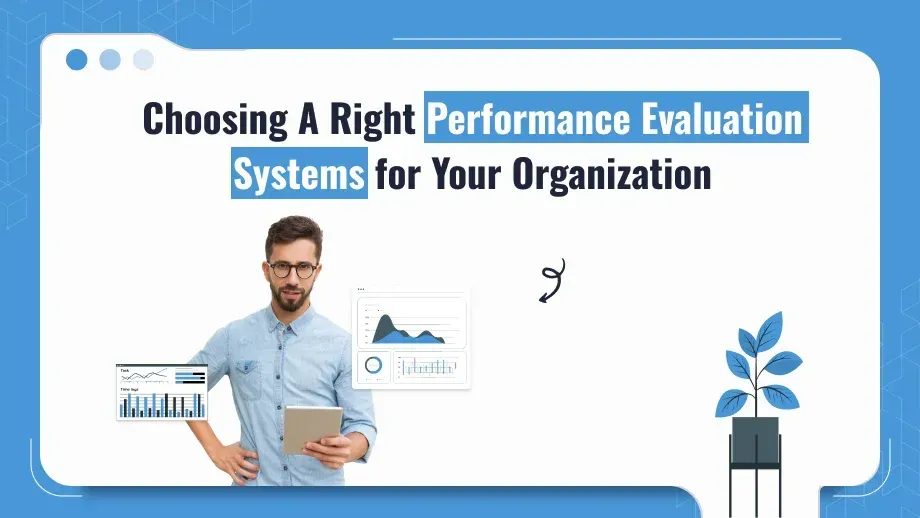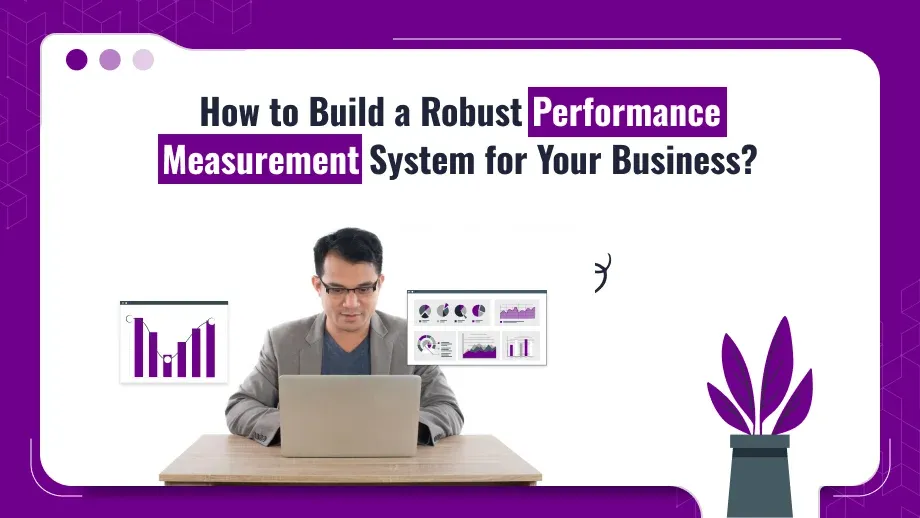
In this present competitive business scenario, reviewing and developing the workforce constantly is a must in order to achieve strategic goals. Performance evaluation systems are at the core of this since they will provide formal frameworks used to examine employee performance, give feedback, and direct development. Read on what the blog has to say about the performance evaluation system, its significance, types, and best practices for its implementation.
What Are Performance Evaluation Systems?
Performance evaluation systems are organized methods through which an organization examines the job performance of its employees within a specified duration. A performance evaluation system provides a comprehensive examination of an employee’s strengths, weaknesses, and areas of development. Conventional significance effective performance evaluation system is epitomized by goal-setting, feedback, and reviewing the results of performance to inform decisions such as promotion, salary increment, or development posting.
Purpose of Performance Evaluation Systems
1. Objective Performance Evaluation
Performance measurement systems standardize the performance of individuals so as to reduce opportunities for subjective judgments in assessment procedures. This will help build confidence and credibility in the organization.
When people feel that their performance will be judged against some defined terms, they perceive the whole procedure as just.
2. Strengths and Areas for Improvement
Organisations can learn the strengths and weaknesses of their employees through systematic evaluations. Such information is very useful for fashioning training and development programs for meeting specific needs and supporting employees’ growth and development in terms of the role.
Recognizing an employee’s strengths can help a manager make an efficient use of his skills for the organization’s advantage. Similarly, locating weaknesses opens up avenues for focused coaching and support.
An effective performance evaluation system enables the employee to better understand career paths. It allows clear feedback on performance that enables setting goals for advancement and securing all required skills needed for desired jobs.
Thirdly, performance evaluation often informs promotion and development opportunities, thus being crucial for career advancement.
3. Alignment of Individual and Organizational Goals
Performance evaluation systems ensure the integration of the objectives of the employee or the individual to meet the bigger picture goals of the organization. Collective success can be ensured, and employees become more purpose-driven in their roles.
When the employees get a glimpse of their contribution to the achievement of the organization’s goal, they are more likely to be motivated and engaged employees.
4. Improving Communication
Regular performance appraisals improve communication open between the managers and employees. This continuous talk creates an open forum for the discussion of expectations, problems, and career goals to improve relationship and cooperation.
Good communication in performance appraisal can also identify potential problems at an early stage to prompt interventions in due course.
Transform the way you assess performance!
Contact us today to learn more about our performance evaluation systems & how they can help your team grow.
Systems of Performance Evaluation
There are various performance evaluation systems which organizations use:
Classic Performance Appraisals
This is the most commonly practiced form of appraisal and usually takes place on a yearly or bi-annual basis. The process takes the form of a formal review by a manager or supervisor and usually focuses on employee performance during the review period. As with more traditional approaches, formal appraisals usually comprise discussion of strengths and weaknesses and future goals.
The system gathers performance appraisals from a variety of sources, including one’s peer, subordinates, and supervisor. Because the feedback is all-rounded, it is fairly easy to obtain meaningful information about an employee’s general performance. Interpersonal skills and cooperative approaches will shine through this method, thereby making those difficult-to-spot areas of improvement on a one-on-one review shine through.
Management by Objectives (MBO)
Employees and managers agree on specific objectives, which are measurable and achievable within a specified time frame. In regard to performance, it is judged based on specific criteria set to accomplish the stated goals. MBO encourages the feeling of ownership of the employees because they have a hand in defining what their targets for performance levels would be.
There is self-assessment, where the employee has to rate himself against set criteria. This method requires reflection and personal accountability on the part of the employee, as he will have to view his work contributions and areas for growth. The self-assessment can be useful to managers since it highlights which aspects of work employees perceive positively and which negatively.
Behaviorally Anchored Rating Scales (BARS)
BARS is measuring both qualitative and quantitative aspects because ratings are anchored on certain behaviors. This approach makes personnel performance evaluation clearer and less subjective. Since ratings can be tied to observable actions, this method ensures that the basis for evaluations would be something very clear and measurable and not some vague criteria.
Types of Performance Management
Understanding the types of performance management can also help an organization in making the right choice. Here are some common types:
Performance Appraisal Systems
These systems focus heavily on the review of past performance. They commonly adopt a formalistic approach to reviewing performance, which is usually done in a yearly review where managers assess the performance of the employees against set standards.
Continuous Performance Management
This system involves regular feedback and continuous reviews during the calendar year. Unlike annual review, where individuals wait to be reviewed and corrected, managers and employees regularly discuss performance with one another and correct it accordingly.
Talent Management Systems
It integrates performance management with other functions of HR, which include recruitment, learning and development, and succession planning. Organizations are, therefore, able to manage their talent pipeline much more effectively by taking a wider view of performance.
This system, focused on setting, tracking, and achieving individual and team goals, enables alignment of employee performance with organizational objectives. Through these systems, people can then work towards common goals and track their progress.
Implement Performance Evaluation Systems
Clear Objectives
The goals of the organization are well-defined and guide the formulation of a performance evaluation system. The objective of the evaluation is clearly communicated to each employee, thus guiding them through the whole process.
Consistency and Fairness
Consistency is as essential as possible in having a good performance evaluation. All employees must be assessed on the same criteria and approach. Through this, trust could easily be built within an organization about its performances.
Training Evaluators
Train managers and evaluators on the performance evaluation, so they are aware of the process and assess the employee fairly and objectively without bias. Provide guidelines on how to minimize biases, effective feedback techniques, and treatment of evaluations in a consistent manner.
Provide Continuous Feedback
Again, performance evaluations should not be solely done in terms of yearly reviews. Continuous feedback should be done for the course of the year, not only to help employees correct themselves accordingly but also to give support to their work.
Engage the employees through self-assessment and incorporate their inputs on their performance. That way, they will have ownership and responsibility for their work. It also enables them to reflect on their performance and set targets that would help them improve.
Leverage Technology
Implement the utilization of a performance management software to enable the process of evaluation. Technology offers the potential for efficiency, following up on performance data, and availability of more relevant analytics in decision-making. There are many features, like goal tracking, automated reminders, and report capabilities on performance management system, which ease the process of evaluation.
Review and Adjust the System Regularly
Implement a review cycle of the performance evaluation system to ensure that it is effective and relevant to the goals of the organization. You will solicit feedback from employees and managers to determine areas of improvement.
Common Problems with Performance Evaluation Systems
Lack of Objectivity in Appraisals
Despite the efforts exerted to have standard evaluations, personal bias could be inputted during marking by the manager. This leads to inconsistent results and employees being adverse to their rankings. Organizations should aim at eliminating bias by training the evaluators exhaustively and creating a culture of fairness in all operations.
Resistance by Employees
Where employees are resistant to the idea of performance evaluation-where the evaluation process is seen as unfair or critical-the process can be an important source of open communication about the purpose and benefits of evaluations. Once employees are engaged in the evaluation process, they are likely to become involved in their own assessment.
Rating Inflation
Managers may increase scores to minimize conflicts or to at least keep good relations with employees. Such inflation would beat the whole purpose of ratings and instead stifle accountability. Calibration sessions are designed to ensure that ratings are accurate and actually measure the performance level.
Time Constraint
It takes an organization a considerable amount of time to get a performance evaluation system right, and the weight of this burden tends to scale up with the size of the organization. The use of technology and policies that are more definite in nature will ease the process.
Future of Performance Evaluation Systems
As organizations become more dynamic, performance evaluation systems will remain the only truly viable way of controlling and development of employees’ work activities. The approach to evaluations is changing. Evaluations are no longer confined to a cycle but rather a continuum of feedback models in which many organizations are embracing technology that can support real-time performance assessments and ongoing dialogue by employees and their managers.
Incorporating modern performance management in the present would include tracking, automatic data analysis, and even AI-based evaluations to be more dynamic in its process of evaluation. These help develop business to ensure an agile workforce is available that can easily adapt to changing business environments and supports employees to become excellent professionals.
Conclusion
Performance evaluation systems are useful in effective manpower management and improvement in employees’ performance. There is systematic assessment that takes place through these systems, allowing organisations to identify strengths and weaknesses, to promote the development of careers, as well as the individual goals in alignment with the goal set by the organisation.
A sound performance evaluation system calls for setting clear objectives for organizations. The practice of carrying out the exercise must be fair, incorporating continuous feedback and use of technology. Common challenges and best practices can help an organization design a performance evaluation process to create accountability and continuous improvement.






